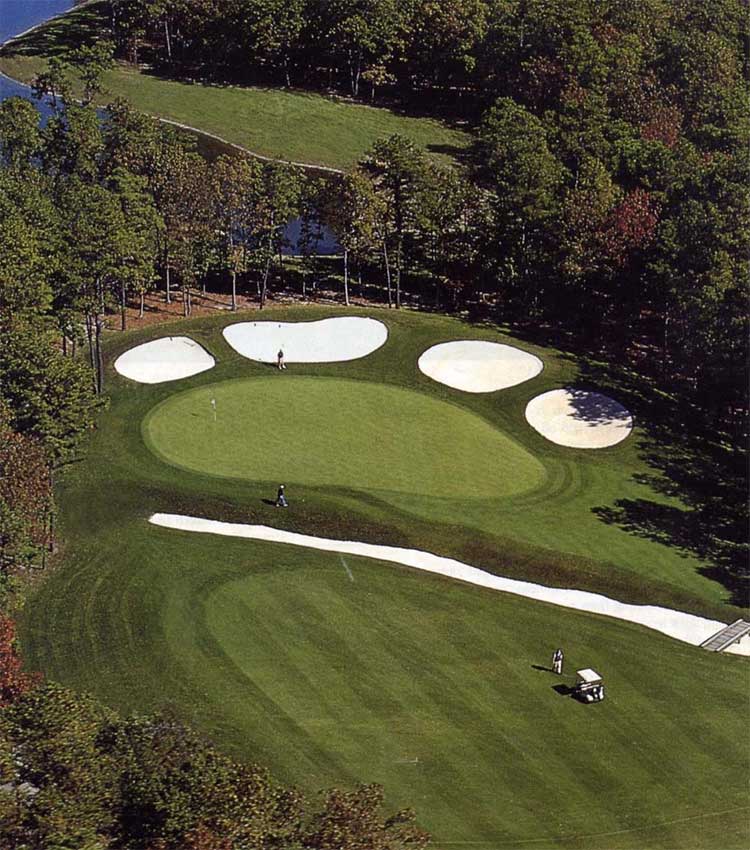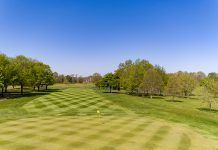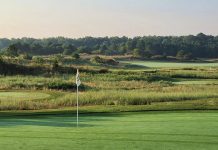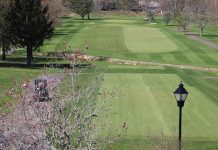Certain parts of the country’s golfing landscape are just synonymous with particular golf course architects. Play in, and around, Myrtle Beach, South Carolina, for example, and you’ll likely be teeing it up at a popular Willard Byrd, Tim Cate or Dan Maples design. In Arkansas, and its surrounding states, there is the world famous Robert Trent Jones Trail. All along the Northeast, from Long Island, New York through North Jersey and down Philadelphia’s Main Line, and the names of America’s most famous golf architects, Donald Ross, A.W. Tillinghast and C.B MacDonald, will likely be seen adorning the plaques of many of the private, and sometimes public, clubhouses. But drive it in, and around, Atlantic City, one of America’s best golfing meccas, and you’re entering Stephen Kay territory.
Architect of three of the Atlantic City’s area’s busiest, and best known, layouts, Blue Heron Pines, Harbor Pines and McCullough’s Emerald Golf Links, and having a hand in renovations of two of the Shore’s oldest courses, Linwood Country Club and The Links at Brigantine Beach, the New York born Kay has created, or modernized, several of the Shore’s most popular places to play where tens of thousands of local, and vacationing, golfers who play, and love to play, do the AC golf scene year in and year out. 
An adjunct instructor at the Rutgers University Professional Turf Management Program, Kay is also the architect of Williamstown’s Scotland Run Golf Club and The Architects Club in Lopatcong. The Architects Club, which features holes inspired by the game’s greatest architects like Ross, Tillinghast and MacDonald, Merion’s Hugh Wilson, Augusta architect Alister MacKenzie, Walter Travis and St. Andrews’ Old Tom Morris is themed like AC’s McCullough’s Emerald Golf Links where players get to test their skills on 18 holes similar to some of the greatest British Open holes from St. Andrews, Carnoustie, Turnberry, Prestwick and Royal Troon.
“Architects and McCullough’s are two very unique golf courses,” said McCullough’s General Manager, Tom Sullivan. “ Stephen did a wonderful job building not exact copies, but holes inspired by design elements by many of the top architects and British Open courses.”
The Brigantine Golf Links, where Kay completed renovations, and which opened for play almost a hundred years ago(1923) is considered by many to be the truest golf links in the whole Atlantic City area. Opened with almost no homes and few trees, the old links on Brigantine Island was, at one time, a favorite practice ground for American amateur and professional players right before boarding the boat to go compete at the annual British Amateur and Open championships in Scotland and England.
Blue Heron Pines and Harbor Pines, both traditionally tree lined, or parkland style, courses, are Kay’s first Atlantic City projects which opened in the 1990s. The architect, who lives and works at Blue Heron, a Ron Jaworski Group golf property, built his homage to the British Open, McCullough’s Emerald Golf Links, shortly after in the early 2000s.
“The variety of golf in Atlantic City is really amazing,” said Kay. “You have old seaside style courses like Atlantic City Country Club and Seaview where major championships have been played which are full of history, and Greate Bay where the LPGA played and where British Open champion Willie Park Jr. was its architect, and modern woodland courses like Blue Heron, Harbor Pines, Ballamor, and Hidden Creek and Galloway National, done by Bill Coore and Ben Crenshaw and Tom Fazio, respectively, which are a lot like courses in Georgia and the Carolinas, and then there’s McCullough’s and Twisted Dune where you can imagine that you’re playing at the British Open.
“South Jersey is such a great area to golf. It’s one of the best golfing destinations in the whole country. I feel very fortunate to have been a part of so many of its courses and to play and live here.”






